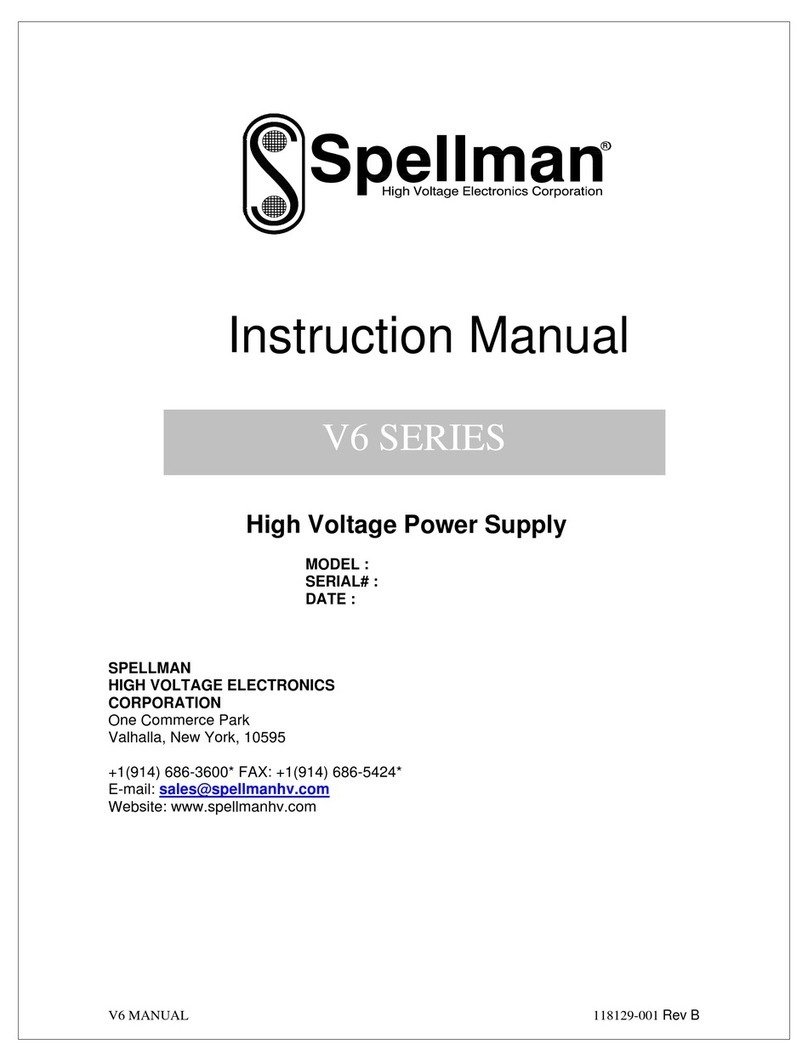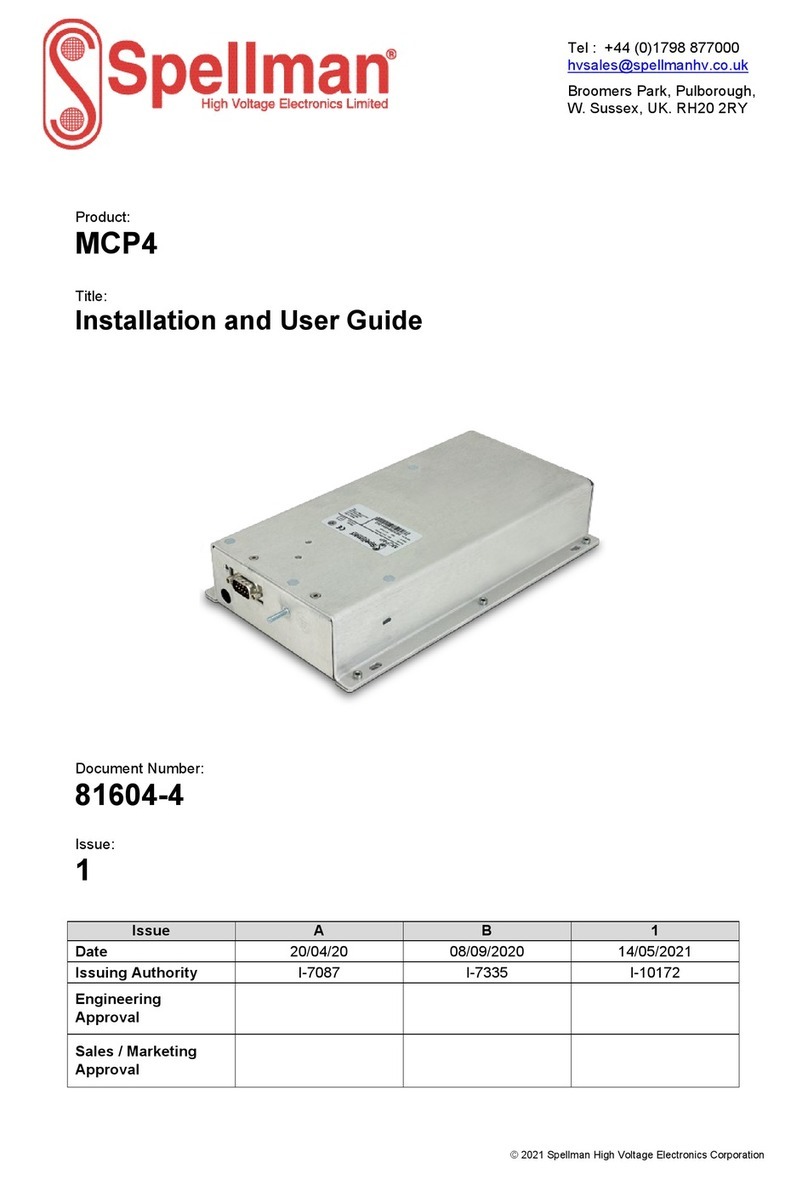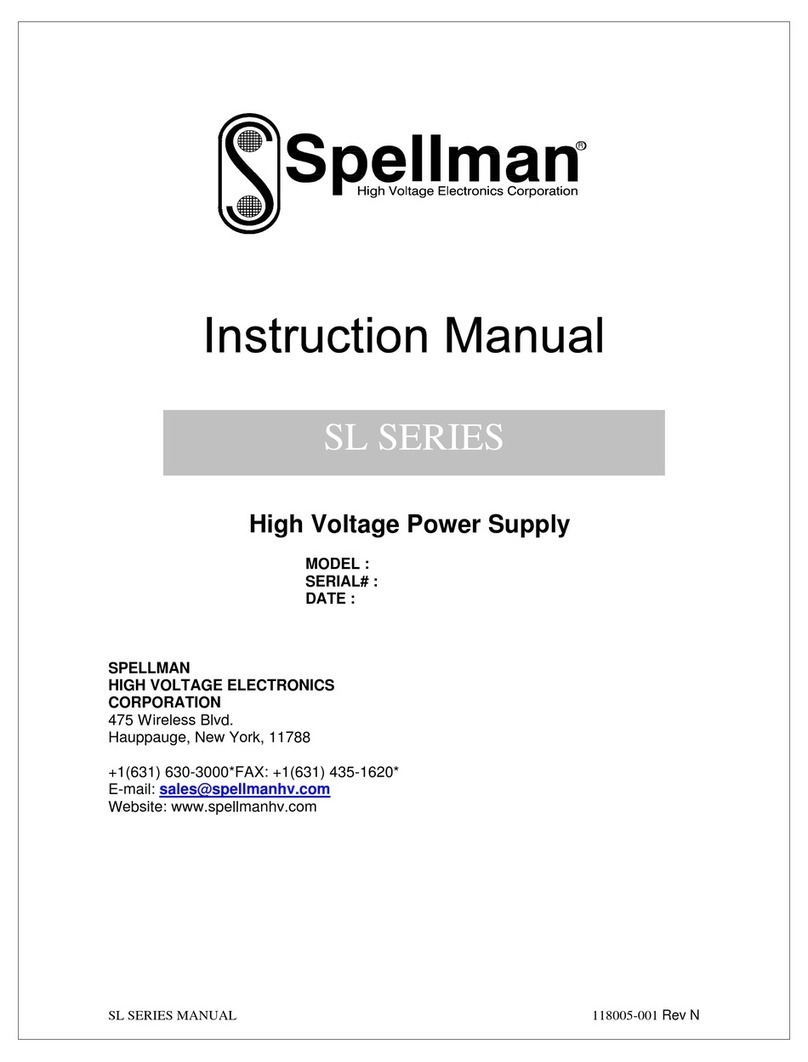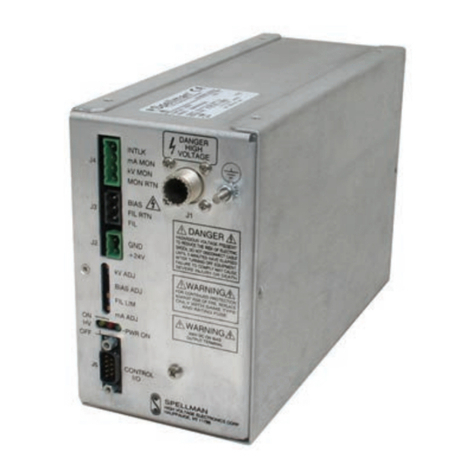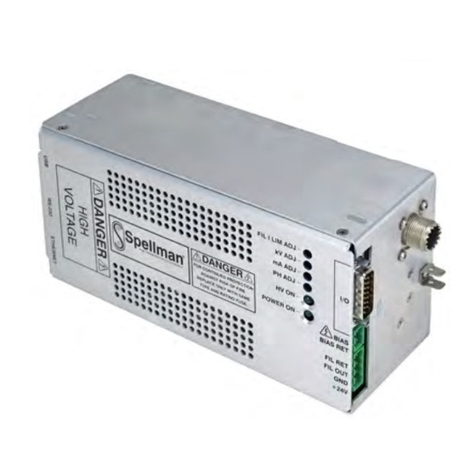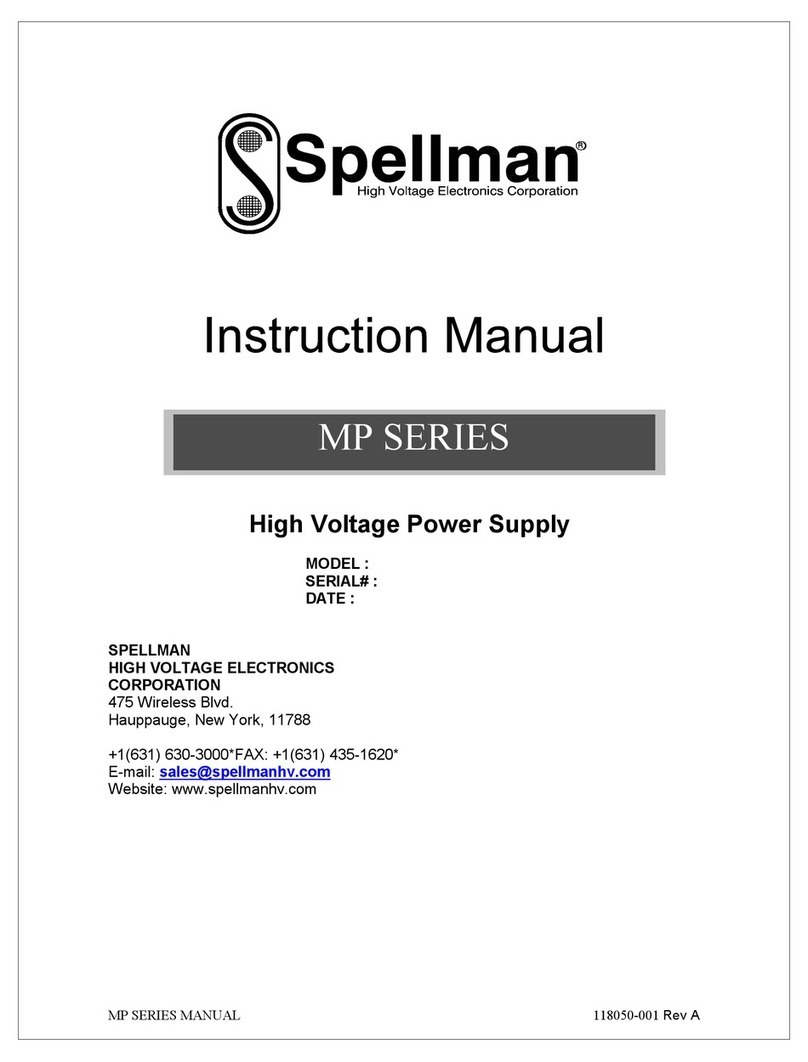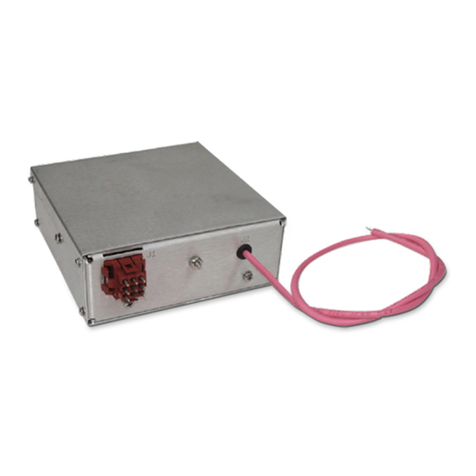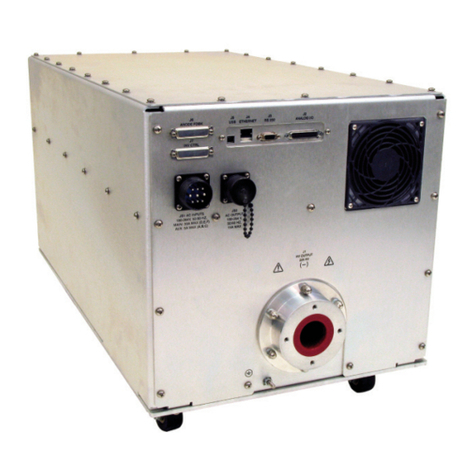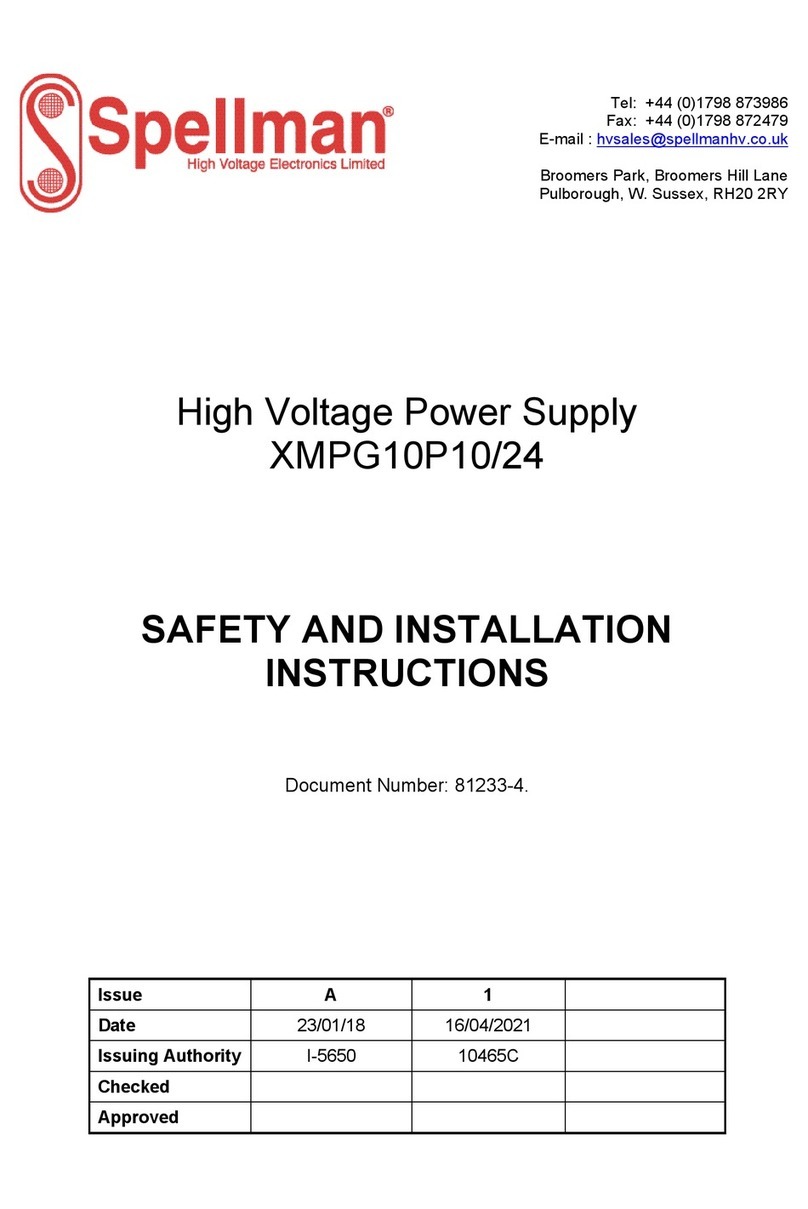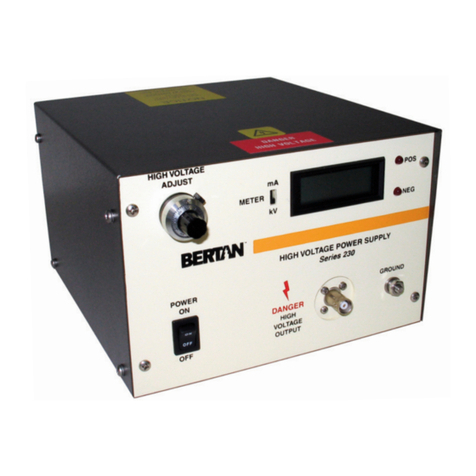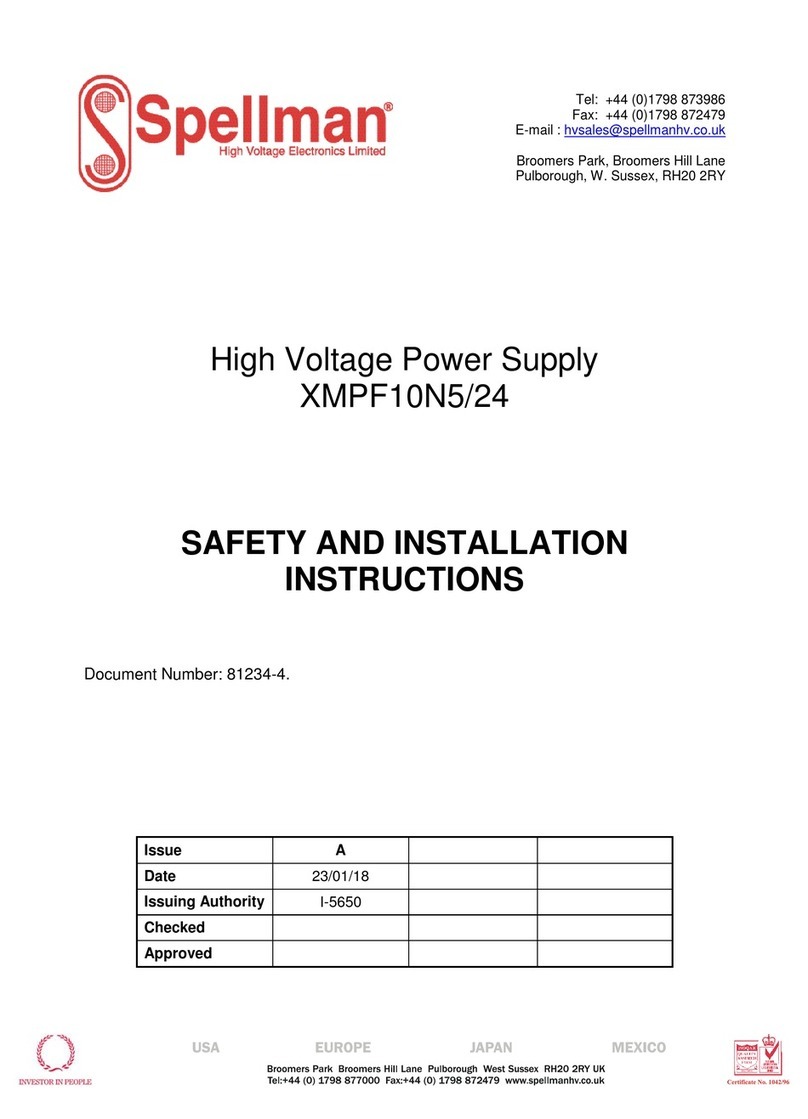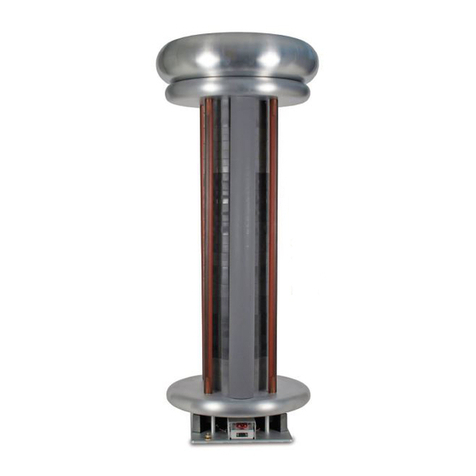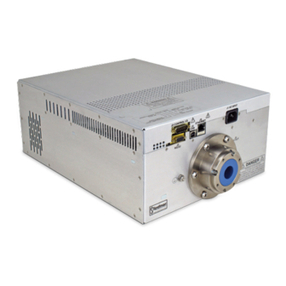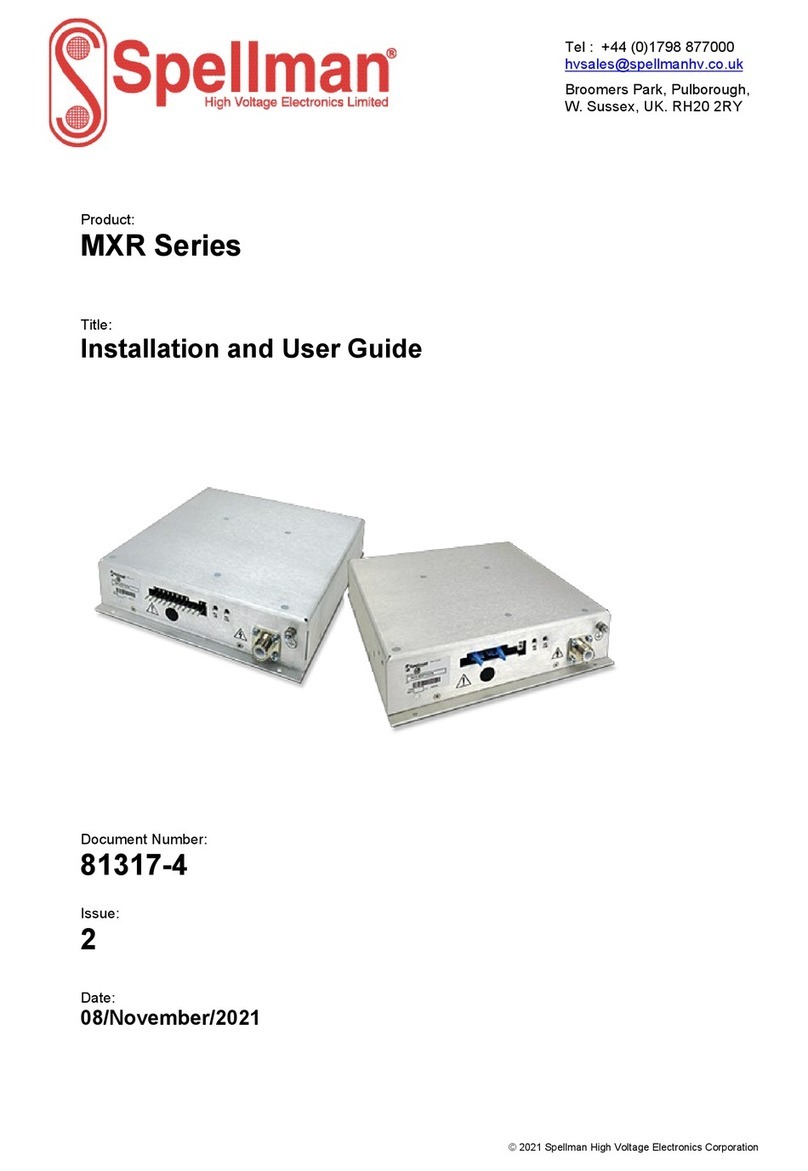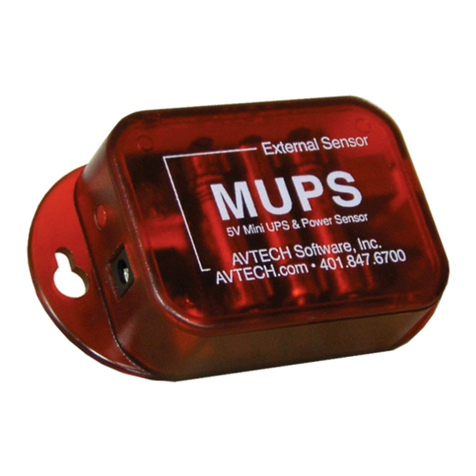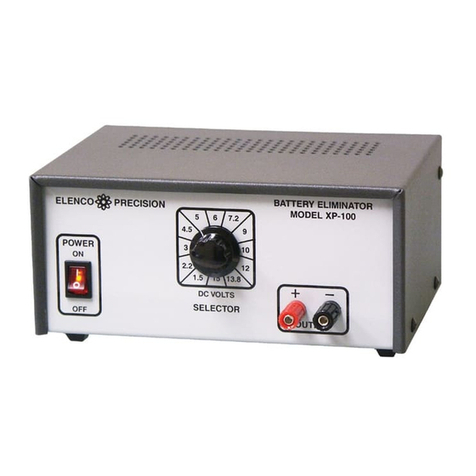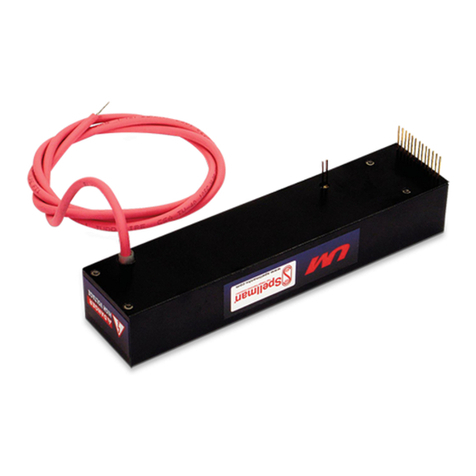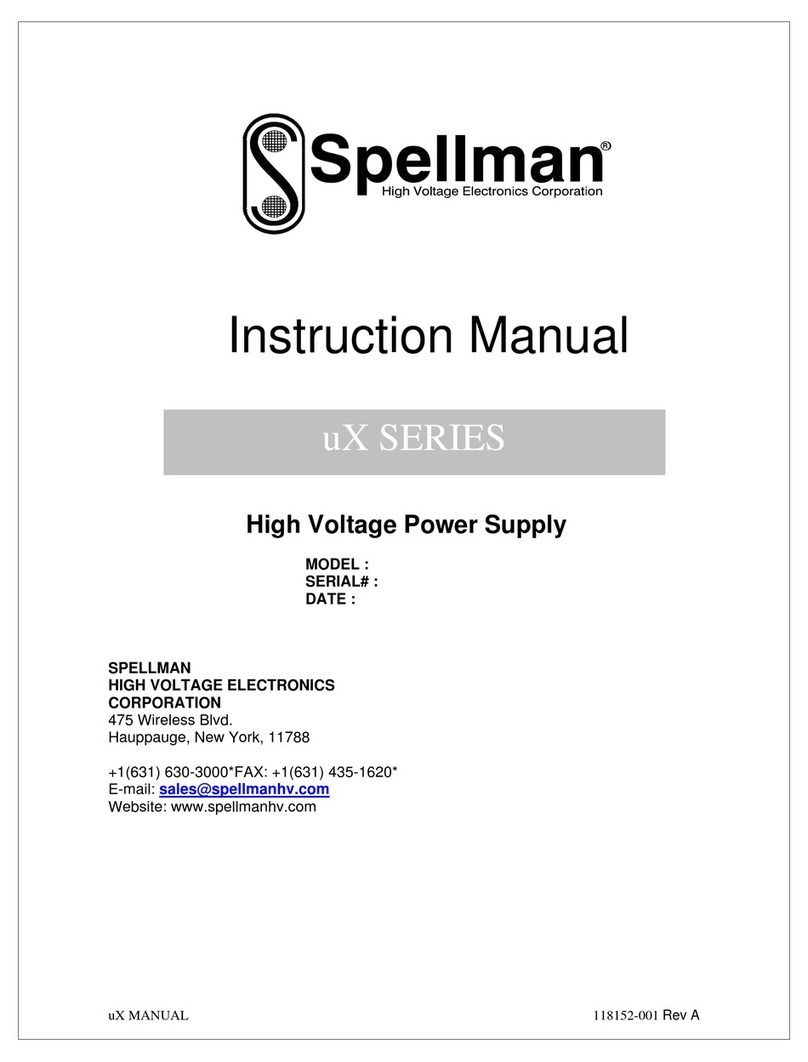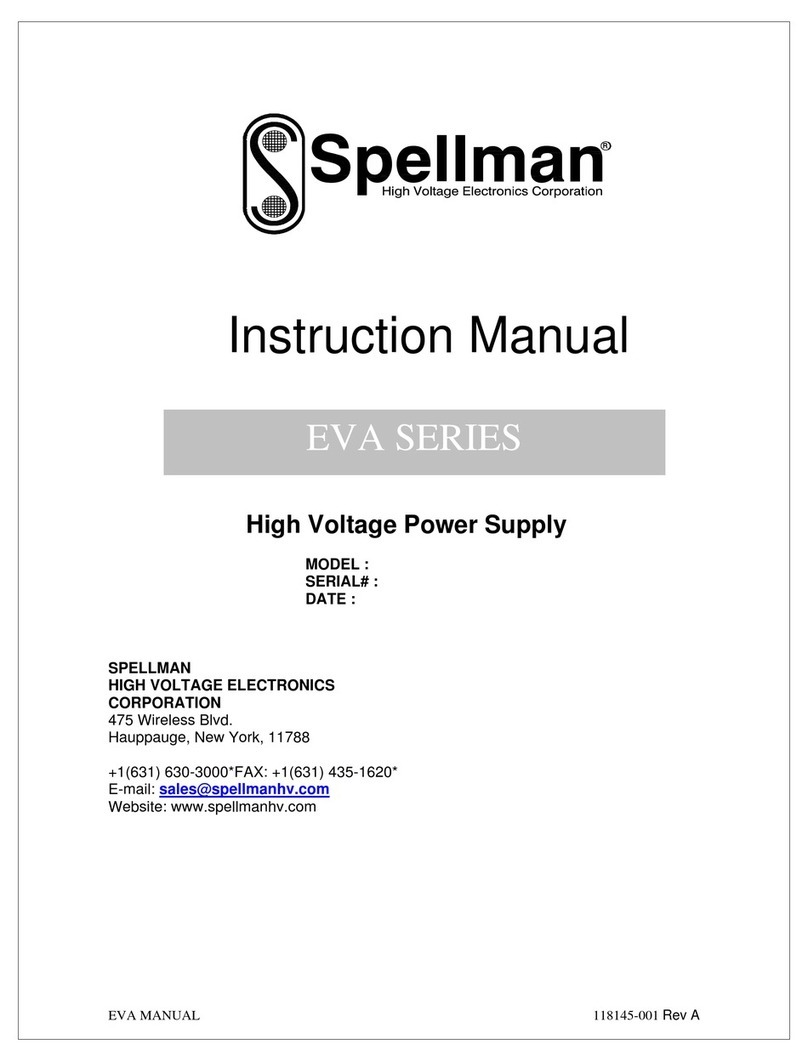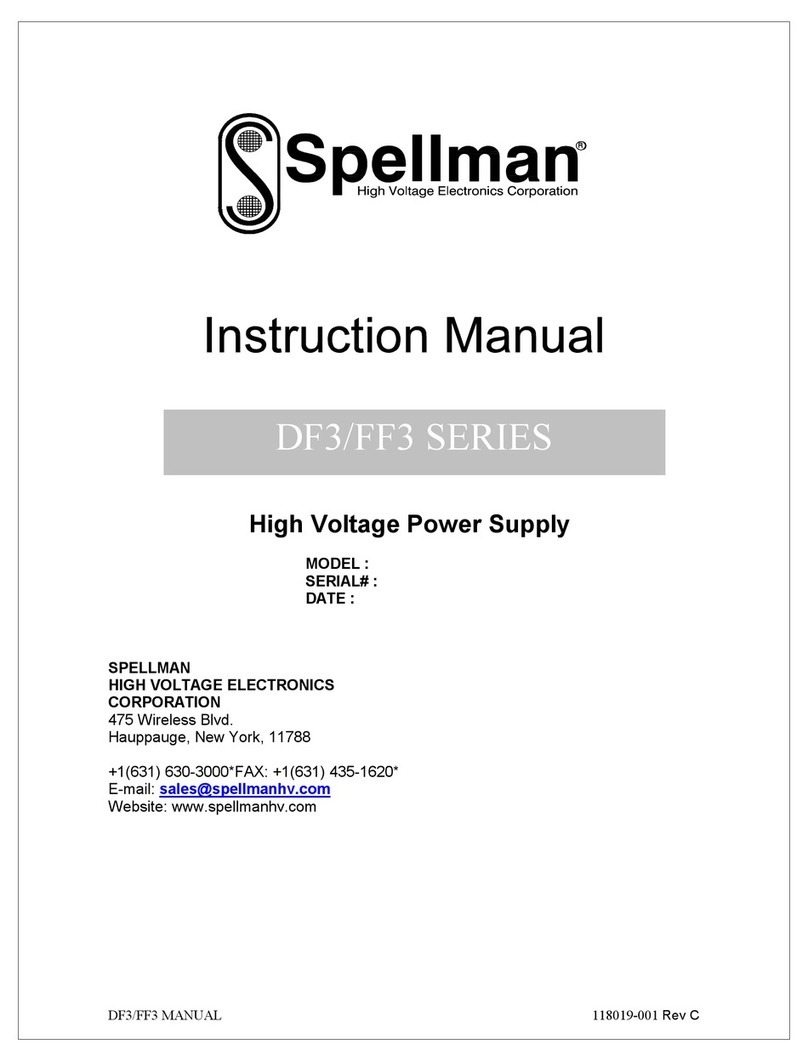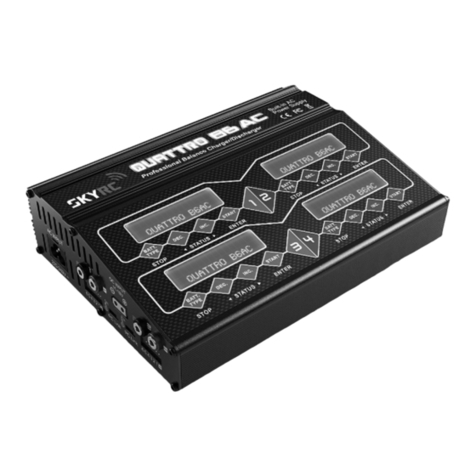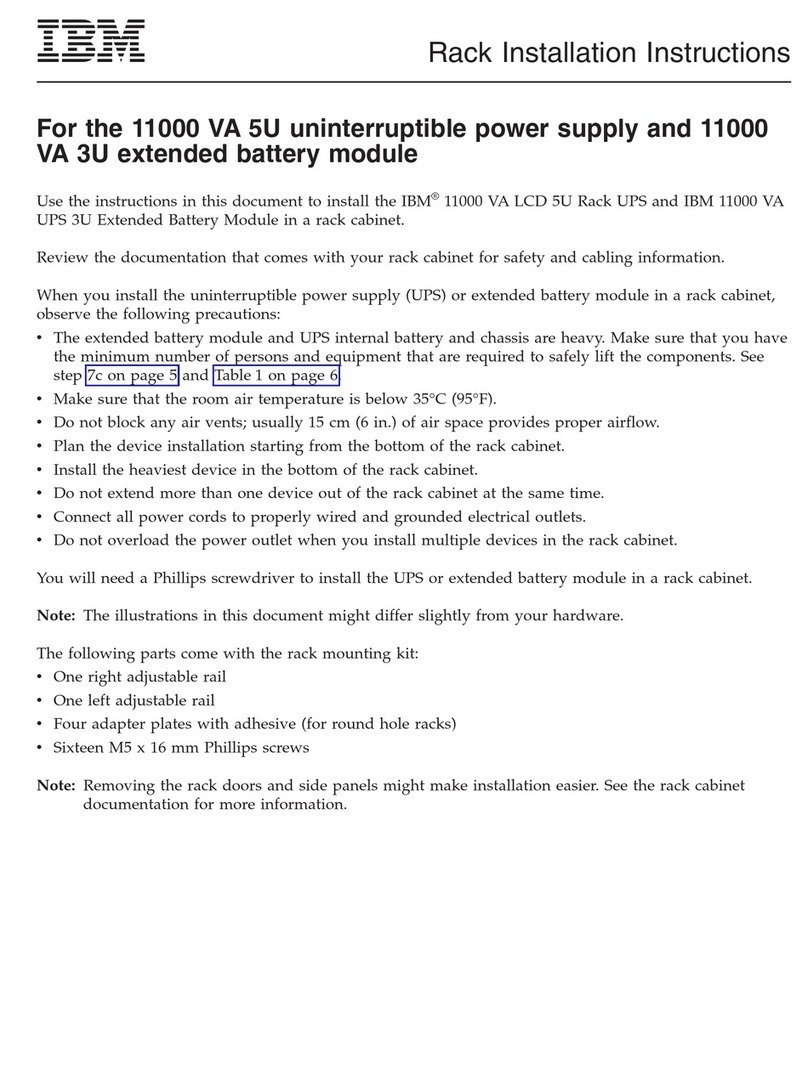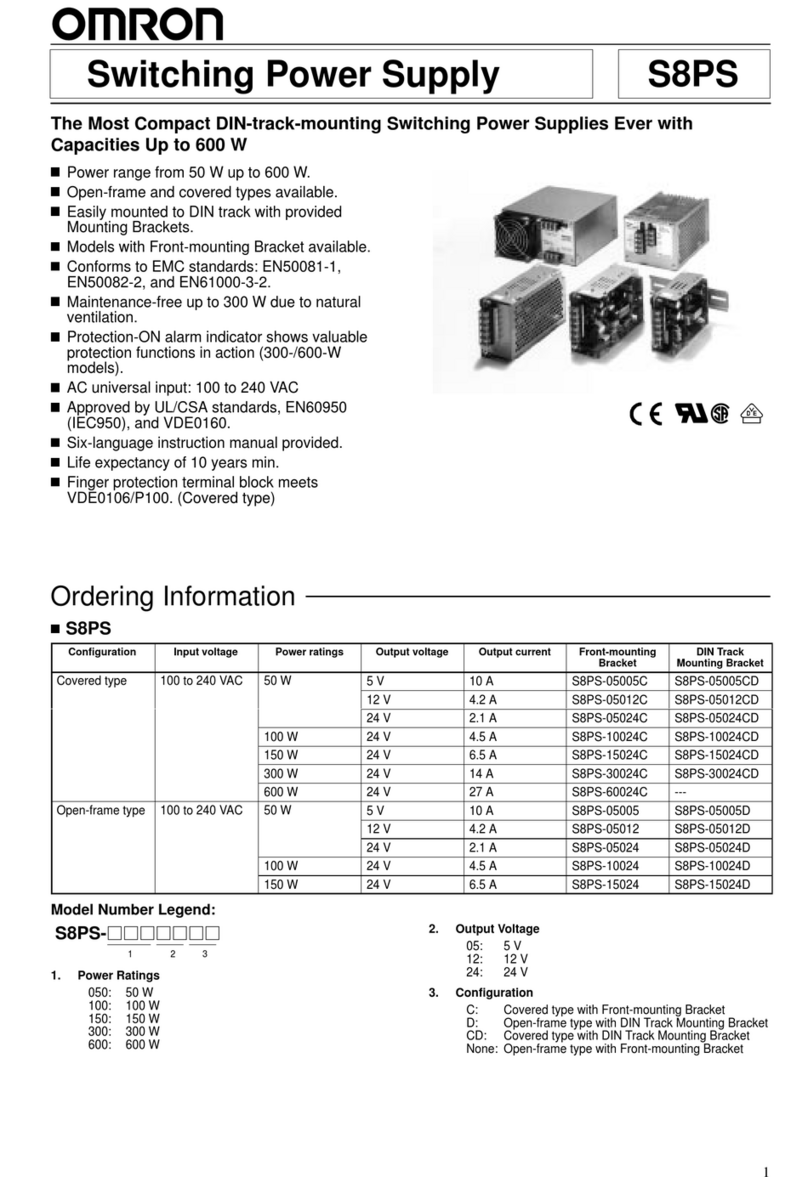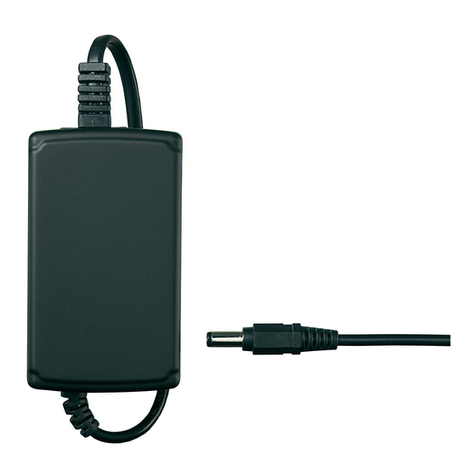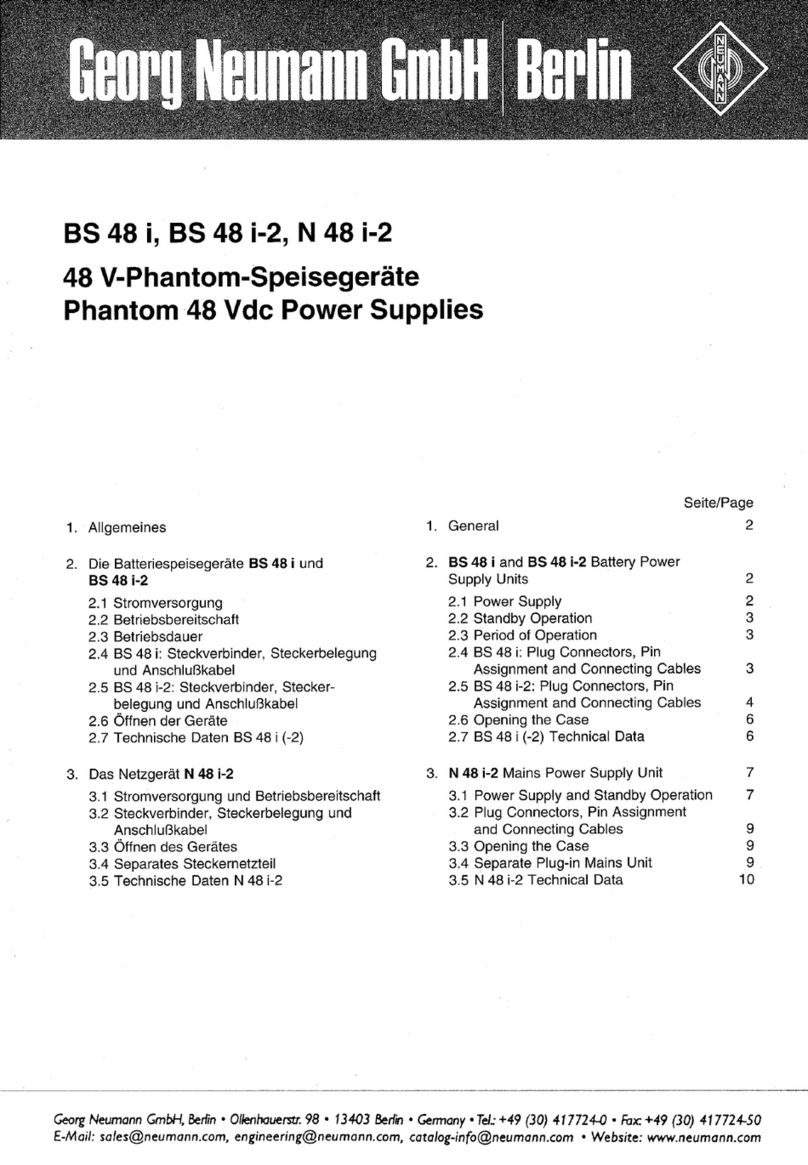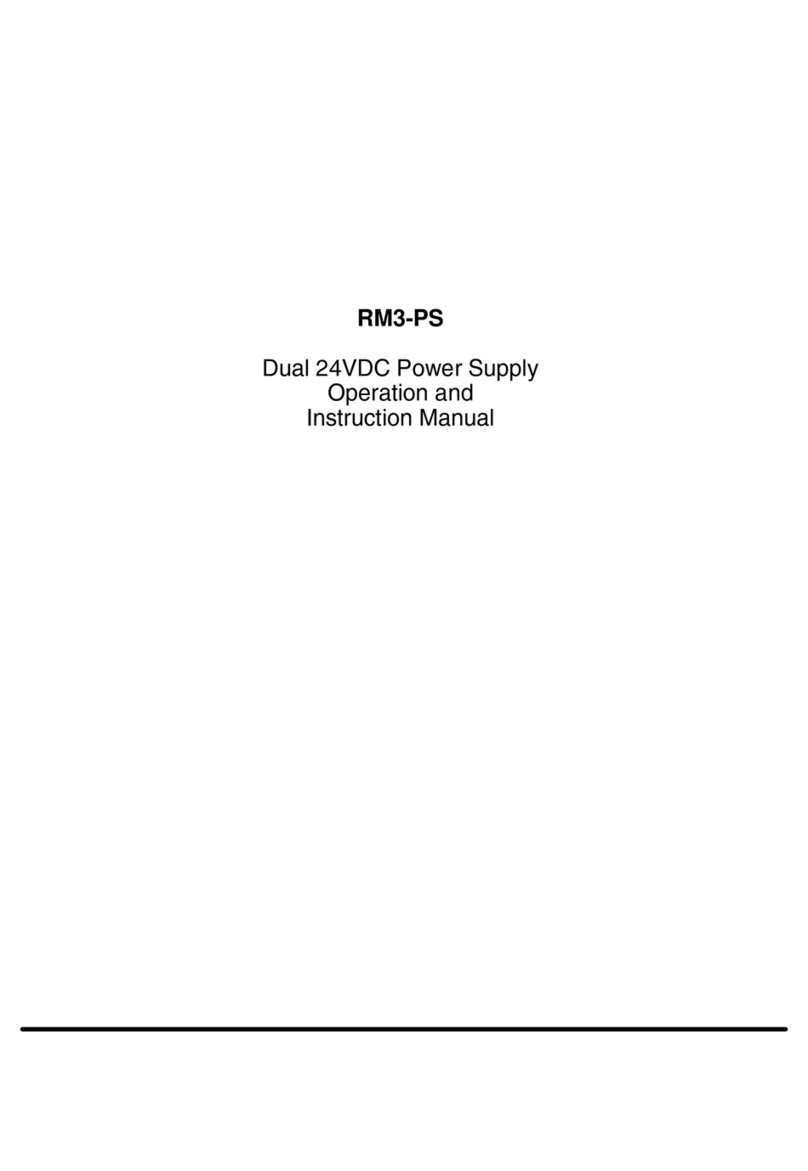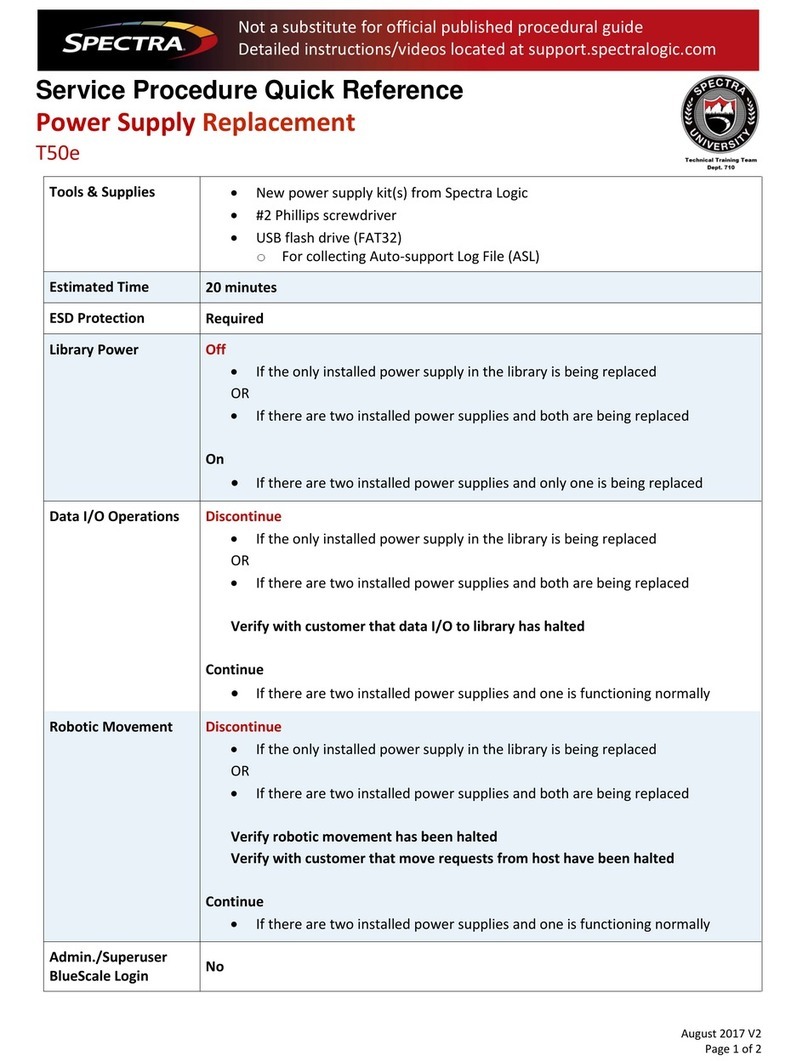
CZE MANUAL 8 118030-001 REV F
WARNING
It is extremely dangerous to use this
circuit to inhibit high voltage generation
for the purpose of servicing or
approaching any area of load
considered unsafe during normal use.
WARNUNG
Es ist sehr gefährlich diese Schaltung
zum abschalten der Spannung fur
Reparatur oder Service Zwecke zu
benutzen.
Reverse Polarity Control Signal: This input signal is
intended to be driven from TTL logic and will cause the
output to switch polarity. The unit will automatically
sequence all internal functions to switch output polarity
with minimal stress. Greater than 3.4V (or open) on pin
10 yields Positive High Voltage. Less than 1V on pin 10
yields Negative High Voltage.
Operation is as follows: upon reverse command, the
inverter in instantaneously disabled and the output begins
to decay from its set point to zero. At no load, this time
constant is 0.1 seconds. At approximately 10% output,
the logic circuitry will switch the primary and secondary
relays and enable the inverter. The output then slows up
to its set value time constant. Obviously, the time to
complete the switch operation is a function of output
voltage setting and load current. The maximum switch
time for set points above 3kV occurs at no load and 30kV.
Under this condition, that time is a constant 100
milliseconds, regardless of output voltage or current
setting.
Polarity Indicator: +24V on pin 11/13 indicates positive
polarity selected, +24V on pin 12/17 indicates negative
polarity selected. Output impedance is 100 ohms. This is
intended to drive an incandescent lamp. Internally, a
relay contact switches the 100ohm resistor to the +24V.
Therefore, the indicator bulb should be connected
between the output and ground. Please note that the
power supply input current will increase by the amount of
current drawn by the incandescent bulb (maximum
current is 50mA). If it is desired to drive an LED instead
of an incandescent bulb, simply add a 3.3k 1/4W resistor
in series with the output and the LED.
Voltage and Current Mode Signals: +15V is provided
through a 3.3K resistor to drive an LED. +15V on pin 19
indicates that the voltage regulator mode is selected.
+15V on pin 18 indicated that the current regulation mode
is selected. The internal control circuitry employs
automatic crossover between voltage and current modes.
In the voltage mode, the current level is set and the
voltage programming is used to control the output. If the
load current in increased to the point where it exceeds the
preset level, the unit will cross over automatically into
current mode. In current mode operation, the voltage
programming is preset and current control controls the
output. If the load current is reduced to the point that the
voltage exceeds the preset level, then the output will
automatically cross over to voltage mode. When the unit
crosses over from either current to voltage mode or
voltage to current mode, the mode signal will switch with
it.
Control Current Test Point: +10V on pin 8/10 = Full
Scale Current ±2%. The return current circuitry allows a
separate path to measure actual load current. The load is
returned to the load return, pin 16/21 of the connector and
a buffer test point is provided on pin 15/20. The standard
current test point provided on pin 5/6 measures the
current delivered to the load while the return current test
point measures the current returned to the power supply
by the load. By comparing these two signals, any
differences between them must be going into leakage.
Therefore, if this leakage exceeds some level, the unit
could be shut down.
Ground Fault Indication: +15 V on pin 17/22 = Fault.
Output impedance = 4.7K. This feature compares the
return load current to the delivered load current and
provides a fault signal if the difference between these
signals (leakage current) exceeds 20uA. This fault signal
can be used to shut down the whole system or through
appropriate circuitry to shut down the power supply either
by using the remote enable or by removing the +24V
input power. The output circuit for this fault indication is
an open collector with a 4.7K pull up resistor




















